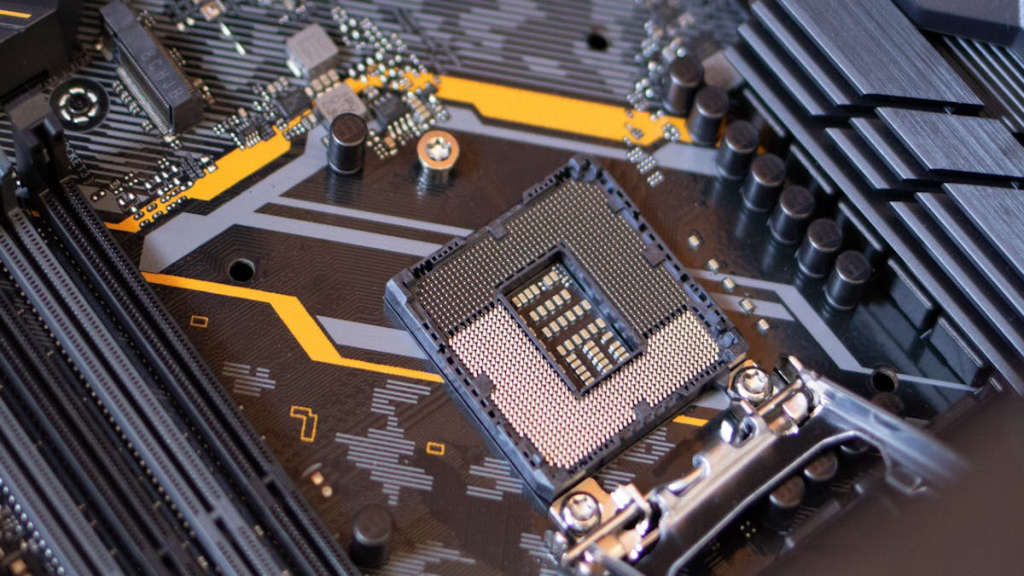Unleashing the Power of Android: Transform Your Mobile Experience Today!

In the fast-paced digital landscape we inhabit today, staying connected has never been more crucial. Our mobile devices serve as lifelines, bridging communication gaps and enhancing our daily lives. Among the myriad options available, Android stands out as a versatile platform tailored to meet diverse needs. As we navigate through applications, settings, and features, it’s essential to explore how to harness the full potential of your Android device. By doing so, you can transform your mobile experience into something truly remarkable. Let’s embark on a journey to unleash the power of Android and elevate your everyday interactions with technology.
Main Points
- Discover unique features that elevate your Android experience.
- Learn about apps that can simplify your daily tasks.
- Understand customization options for a personalized interface.
- Explore security tips to protect your device and data.

Understanding the Android Ecosystem: A Gateway to Innovation
The Android ecosystem is a vibrant tapestry of technology, creativity, and collaboration. It’s fascinating how this platform empowers an array of innovations, connecting millions of users worldwide. Yet, the sheer breadth of options can sometimes lead to confusion. For example, with countless devices and applications available, where should one begin?
Key Aspects of the Android Ecosystem
- Device Variety: The diversity of Android devices caters to every budget and need, from budget smartphones to high-end tablets.
- App Diversity: With over two million apps on the Google Play Store, users can find solutions for nearly any task, but having too many choices might overwhelm.
- Customizability: Unlike many platforms, Android allows users to personalize their experience, making it unique—but managing these customizations can be tricky.
Despite these complexities, the ongoing evolution of the Android ecosystem continues to pave the way for groundbreaking ideas. New technologies such as AI and cloud services further enrich this landscape, providing tools that were once the stuff of science fiction. In navigating this intricate environment, one discovers not just how to use Android but how to innovate within it—an adventure that is both challenging and exhilarating.

Essential Apps That Elevate Your Android Experience
In today’s digital age, the right applications can greatly enhance your Android experience. Whether you’re looking to boost productivity, stay organized, or simply entertain yourself, a selection of key tools can make all the difference. Here are a few essential apps that warrant your attention.
| App | Purpose |
|---|---|
| Trello | Project Management |
| Spotify | Music Streaming |
| Evernote | Note-taking |
Why These Apps?
Each of these applications serves a unique purpose. For instance, Trello organizes tasks seamlessly, making collaboration a breeze. Spotify, on the other hand, curates your favorite tunes, ensuring you’re never bored. As for Evernote, it acts as a digital notebook that can store insights or random thoughts.
Ultimately, selecting the right app is about personal preference. Explore and find which tools resonate with you, because a well-chosen app can transform your daily routine.

Customizing Your Device: Tips for Personalizing Android Settings
Android devices are as unique as their users, and customizing yours can enhance your experience significantly. Begin with the home screen, a canvas where your personality can shine. Arrange your favorite apps for easy access, while adding widgets to keep vital information at your fingertips. Have you ever thought about changing your wallpaper? A fresh image can give your device a whole new vibe.
Delve into Settings
Next, explore your settings. Navigating through the menu can feel overwhelming, but this is where the magic happens. Adjust notifications to reduce clutter; for instance, silencing non-essential apps can create a quieter environment. Moreover, don’t shy away from accessibility features. They aren’t just for those who need them—they can benefit everyone, making your device easier and more enjoyable to use.
Lastly, consider personalizing your ringtones and alarm sounds. This small detail can add a touch of joy to your daily routine. So go ahead, experiment, and create an Android experience that truly feels like yours!
Boosting Performance: Top Tricks to Optimize Your Android Device
Optimizing your Android device can significantly enhance its performance, making your daily tasks smoother and more enjoyable. However, with numerous options available, it might feel overwhelming to know where to start. Fear not; here are some insightful tricks to consider.
1. Clear Cached Data
Cached data accumulates over time. It speeds up app launches, but too much can bog down your device. Regularly clearing cached data can free up precious storage space.
2. Limit Background Processes
Many apps run in the background, consuming resources. Limiting these can improve speed and battery life. Navigate to your developer options to tweak these settings.
3. Uninstall Unused Apps
Those forgotten apps can clutter your device and drain resources. Uninstall what you don’t use. A lean device performs better and keeps distractions at bay.
4. Update Your Software
Keeping your operating system and apps updated ensures you have the latest performance enhancements and security fixes.
5. Optimize Battery Usage
Striking a balance between performance and battery life is vital. Adjust brightness levels and use battery saver modes when needed.
| Tip | Benefit |
|---|---|
| Clear Cached Data | Frees up storage and speeds up your device. |
| Limit Background Processes | Improves overall performance. |
By implementing these strategies, you’ll soon notice a marked improvement in your device’s efficiency. Remember, a well-maintained device not only feels faster but also more responsive and enjoyable to use.
Navigating Android Security: Protecting Your Privacy in a Mobile World
In today’s hyper-connected world, ensuring privacy on your Android device is more essential than ever. Each day, we share an avalanche of data, often without realizing its implications. You might think your phone is a mere communication tool, yet it’s a portal to your personal life. The apps you install, the websites you visit, and even your location can expose you to potential risks.
Understanding Permissions
Have you ever noticed those prompts asking for permissions during app installation? They can be confusing. Why does a flashlight app need access to your contacts? This illustrates the thin line between functionality and privacy. It’s crucial to review app permissions thoughtfully and only grant access that is absolutely necessary. Moreover, always verify the source of an app before downloading; rogue applications can compromise your device’s security.
Regular Updates Matter
Another fundamental aspect is keeping your device updated. Software updates often patch vulnerabilities that hackers exploit. Although this might seem tedious, it’s a small but significant step towards safeguarding your device.
Ultimately, while technology enhances our lives, it also demands active engagement from us to maintain our privacy. Balancing convenience and security is a shared responsibility.
The Future of Android: Exciting Features on the Horizon
As we look ahead, the landscape of Android is ripe for transformation. Developers are continuously pushing boundaries, bringing forth innovative features that promise to reshape our experiences. One can’t help but wonder about the upcoming enhancements. For instance, the integration of more sophisticated machine learning algorithms could make personal assistants remarkably intuitive. Wouldn’t it be amazing if your device anticipated your needs even before you realized them?
Privacy and Customization
Furthermore, privacy remains a central concern. Android’s future may involve enhanced control over personal data, allowing users to dictate who can access their information. This shift not only addresses privacy issues but also empowers users like never before. Additionally, customization options are likely to expand, letting users craft a unique interface that reflects their personality.
| Feature | Benefit |
|---|---|
| Enhanced AI | Intuitive user experiences |
| Privacy Controls | Better user empowerment |
| Customization Options | Personalized interfaces |
In conclusion, the future of Android is anything but dull. With these ambitious advancements, it’s an exciting time for users and developers alike. Although challenges remain, the potential for a more user-centric experience is on the horizon.
Seamless Integration: How to Connect Your Android with Other Devices
In today’s interconnected world, ensuring your Android device communicates effortlessly with other gadgets is vital. Seamless integration enhances your digital experience, but it can often feel overwhelming. Let’s simplify this process.
Key Steps for Integration
- Wi-Fi Direct: Use this feature to connect your Android directly to devices without a network. It facilitates quick file transfers and streaming.
- Bluetooth Pairing: Ensure your Bluetooth is activated. Pairing with speakers, headphones, or wearables can enhance your overall experience.
- Cloud Services: Utilize platforms like Google Drive or Dropbox. This allows you to access files across multiple devices seamlessly.
It’s fascinating how many options are available. However, sometimes the sheer variety can lead to confusion. For example, choosing between Wi-Fi Direct and Bluetooth might leave you pondering their actual benefits. Moreover, not every integration, while functional, feels intuitive. Take your time to explore each method, understanding that developers design these tools to make your life easier—but occasionally, they might complicate things.
In conclusion, by actively engaging with these integration methods, you will undoubtedly unlock the full potential of your Android device in an increasingly connected world.
Top Android Accessories to Enhance Your Mobile Journey
In today’s fast-paced world, our smartphones have become essential companions. However, without the right accessories, their potential may remain unutilized. Let’s explore a few must-have accessories that can make a significant difference.
1. Quality Headphones
Robust sound quality is a game-changer when it comes to music or podcasts. Invest in a pair of noise-cancelling headphones. They not only provide you the clarity you seek but also help in creating an immersive experience. Enjoying your favorite tunes becomes remarkably easy with no distractions.
2. Portable Charger
Let’s face it: a dead phone can be a nightmare. This is where a portable charger shines. With a compact design, it seamlessly fits into your bag, ready to jump in whenever you need it most. Never fear the battery drain during long journeys again.
3. Protective Case
Accidents happen. Yet, they don’t have to ruin your device. A well-fitted protective case offers peace of mind. It shields against potential damage while allowing you to express your style. Why settle for anything less?
| Accessory | Benefit |
|---|---|
| Headphones | Enhanced sound experience |
| Portable Charger | Power on-the-go |
| Protective Case | Durability and style |
Ultimately, these accessories not only enhance functionality but also improve the overall experience. Make your mobile journey even more delightful today!
Android vs. iOS: Making the Right Choice for Your Lifestyle
When choosing a mobile operating system, many individuals find themselves at a crossroads between Android and iOS. Each platform has its unique characteristics, and the right choice often depends on personal preferences and lifestyle needs.
Customization vs. Simplicity
Android offers an extensive range of customization options. Users can personalize their devices extensively, tailoring everything from home screens to application layouts. However, this flexibility often leads to confusion, especially for those unfamiliar with technology. On the other hand, iOS provides a more streamlined experience. The straightforward interface appeals to those who prefer simplicity and reliability, but it may feel restrictive to others who seek a more tailored experience.
App Ecosystem and Updates
Another crucial aspect to consider is the app ecosystem. Android apps can be diverse and sometimes inconsistent in quality, but they often arrive on the platform first. Conversely, iOS apps typically undergo rigorous review processes, ensuring higher quality and security but potentially limiting user choice. Thus, the decision between the two can often boil down to which features resonate most in your daily life.
Ultimately, your choice should align with your unique requirements, whether you prioritize flexibility or straightforward functionality.
Frequently Asked Questions
What is Android?
Android is an open-source operating system developed by Google, primarily designed for mobile devices such as smartphones and tablets.
How do I update my Android device?
To update your Android device, go to ‘Settings’, select ‘System’, then ‘System update’, and follow the prompts to check for and install any available updates.
Can I install apps not listed in the Google Play Store?
Yes, you can install apps from third-party sources by enabling ‘Unknown sources’ in your device’s security settings. However, be cautious as this may pose security risks.
What programming languages are used for Android development?
The primary languages used for Android development are Java and Kotlin, with Kotlin being the preferred language recommended by Google.
How do I take a screenshot on an Android device?
To take a screenshot, press the Power button and the Volume Down button simultaneously. On some devices, you may also swipe your hand across the screen.
What is the difference between Android and iOS?
Android is an open-source platform that allows customization and is used by various manufacturers, while iOS is a closed-source platform developed only by Apple for its devices.
How can I improve the battery life of my Android phone?
To improve battery life, reduce screen brightness, limit background app usage, enable battery saver mode, and disable unnecessary features like Bluetooth and GPS when not in use.
What is the Android OS versioning system?
Android OS versions are denoted by a version number (e.g., Android 12) and are often named after desserts, although Google has shifted to a numerical system for the latest versions.
How do I factory reset my Android device?
To factory reset your Android device, go to ‘Settings’, select ‘System’, then ‘Reset options’, and choose ‘Erase all data (factory reset)’. Make sure to back up your data first.
What are Android permissions?
Android permissions are security measures that restrict access of apps to certain features or data on the device, such as the camera, contacts, or location information.




